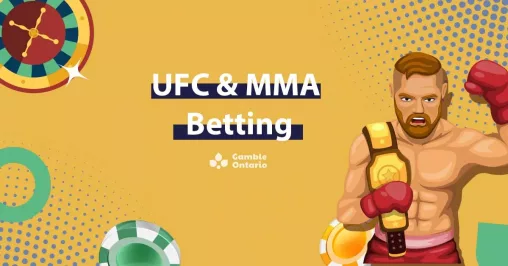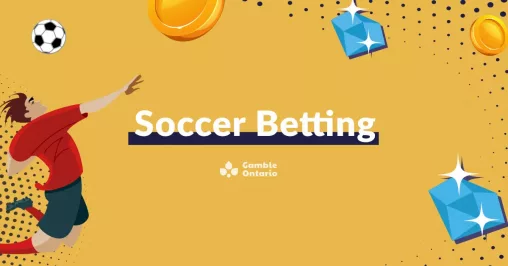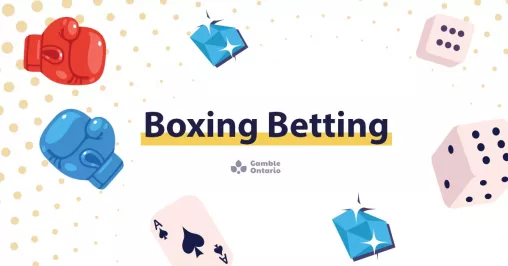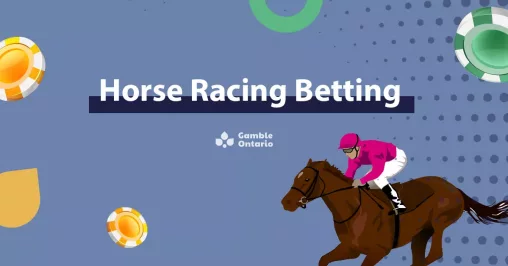What Does + And – Mean in Betting?
Sports betting can add action and excitement to even the most anticipated sporting events. The key is understanding what the odds you see attached to those events mean. For instance, what does the + and – mean at sports betting sites?
A basic understanding of plus-minus betting can go a long way. Those symbols provide a clear picture of who the favourite is, who the underdog is, and the likelihood of each achieving the desired result. Instead of wondering, “what does -110 mean in betting,” you can become an expert on the odds in sports betting and how to use them. These symbols are used to denote the point spread and are useful tools that you should understand how to use before you make your first bet.
This betting guide is going to show you everything you need to know about what does + and – mean in betting? Learn about -110 betting odds, +110 betting, and how you can use those betting odds to make a better wager each and every time.
Understanding Betting Odds
Before we can worry about things like -110 in betting or what +110 means in betting, it helps to know about the odds, in general. Odds are the probability of that outcome taking place. Odds can be assigned to the moneyline, point totals, point spreads, player props, and more. These are all different examples of betting markets that you might find in a sportsbook.
The concept of the + and – is to indicate who the underdogs and favourites are. This information gives the bettor the knowledge needed to make their wager. The odds also let the bettor know how much they can expect to win in that scenario.
The simplest way to explain “what is -110 in betting” is to focus on the – symbol. That symbol denotes what the favoured outcome is. If you have ever wondered, “what does the minus 110 mean in betting,” it indicates that the outcome is slightly better than 50/50 to happen.
The same goes for the + symbol, only in reverse. A + symbol indicates that it is the less likely of the two outcomes (or the underdog). Odds of +110 are slightly less than 50/50 to occur, which means that +110 or -110 betting is right around a coin flip at best.
What Does The Plus Symbol Mean in a Sports Betting Spread?
The + symbol indicates the less likely of the two instances. It can be used not only to denote odds but the “spread” as well. The spread indicates not only which team will win but by how many points they must win in order to cash the bet.
Let’s take a brief look at some examples before summarizing them below. You may see the Dallas Mavericks listed at +110. But what does +110 mean in sports betting? It means that they are slightly less than 50/50 to come out successful.
The goal of sports betting is to make money, not necessarily to win with greater frequency. If you take advantage of + odds, you can create bigger winners that don’t need to hit nearly as often. Betting is about creating long-term winnings, and even infrequent underdog winners can put you in the black at the end of the day, week, or year.
The + sign also shows you how much you can win by risking $100. For example, a betting line that is +150 will reward you with $150 if you bet $100, totalling a return of $250 after you get your stake back as well.
- Example 1: Dallas Mavericks (+110). This shows that the Mavericks are slight underdogs to win.
- Example 2: New York Jets +3.5 (+110). This line indicates that the Jets are 3.5-point underdogs in their game. The +110 are the odds that you can get on this wager, meaning that you will win $110 if you risk $100.
What Does The Minus Symbol Mean in a Sports Betting Spread?
Conversely, the – symbol denotes the more likely of the two actions. Negative odds help the bettor know which of the two outcomes is statistically more likely to happen. That said, the -110 line in betting can also help you figure out what the potential winnings will be.
Negative odds indicate how much you can expect to get back from a $100 bet. The negative odds show how much you have to risk to win $100. For example, if the line is -130, you can risk $130 to win $100, returning a total of $230 when all is said and done.
While it may seem simple to bet the favourite, it is far from a proven method. After all, the favorites can lose on any given day, creating an outright loss. Even betting on a favorite can create less than worthwhile winnings, which can be negated by a loss far quicker than a large underdog bet would.
- Example 1: The Boston Red Sox (-110) indicates that the Red Sox are given a strong chance to win the game outright. You can risk $110 to win $100, returning a total of $210.
- Example 2: Novak Djokovic -1.5 (-110). To win this bet, Djokovic would need to win straight sets, and the -110 odds indicate that it is slightly favoured to happen.
Understanding -110 Betting Odds
What does -110 in betting actually mean? We’ve covered how it means that the more likely outcome involves the team with – odds to come out on the winning side of the ledger. That said, it is also the “standard” odd.
What do standard odds mean? Well, you generally won’t find +100 odds (which is exactly 50/50) on a game or outcome. For that reason, -110 or +110 is the closest things will get. In reality, it is a way for the sportsbooks to make sure that they always profit no matter which team wins.
For instance, you will most often see -110 odds on point spreads. That is because either outcome stands the same chance of coming true as the other. While you might see higher odds of an outright win, a victory covering the spread is far less likely. Sportsbooks default to -110 and generally keep the odds there for point spreads as it ensures that neither side gets made whole, letting the sportsbook keep the difference.
For many bettors, -110 odds are a bit tricky. They can be seen as a “safe” play that, at the same time, guarantees the best returns. In reality, however, you need to win well over 50% of your bets at this level to turn a profit over a longer timeframe.
Comparing +110 and -110 Betting Odds
While they may not seem all that different, +110 and -110 odds can make a world of difference in your long-term betting strategy. It can be all too easy to bet on the -110 odds, seeing it as the safer play between the two.
In reality, betting the +110 odds has a stronger return. It’s impossible to say if it’s better to bet on +110 odds or -110 odds, as it depends on the betting selection attached. You need to analyze the odds against the probability of an event occurring to determine if you should make a bet.
The -110 odds are commonly available at many sportsbooks for standard odds. Make sure that you like your wagers before taking -110 American odds, as the payouts aren’t always great on these lines, and you need to hit a winner to make the numbers work.
No matter if you’re betting on the NBA, MLB, football, or anything else, know that the standard moneyline bet at many oddsmakers, including sites like FanDuel, has -110 as their standard gambling format for sports bettors.
Common Mistakes to Avoid in Betting With -110 Odds
The most common issue with betting on -110 odds is that you need to win more bets than you would think to make the math work and earn you a good percentage return on your bets. There are two ideals to focus on when betting on sports. The first is to maximize your winnings, meaning you should put a premium on quality odds. The second is to find the matchup with the best chance of winning. A good sports bettor mixes those two things.
Betting on the more likely outcome might seem simple, but it is anything but. For -110 odds, the likelihood of that event occurring is only slightly better than 50/50. That’s a coin flip at best. Even if it hits at a 50% clip, you will lose money over the long haul. Mixing in + odds is a great way to earn bigger on your winnings while hitting at a much lower clip (40% or so).
There are different sports betting strategies, but a couple of general rules apply. You can stick with +110 or greater odds regularly. If you hit even close to 50% of your picks, the winnings will offset the overall negative record and produce a profit.
The second tip is to stick with divisional underdogs in your bets. Division opponents play one another more often, meaning that the games are naturally tighter. You are more likely to pick an upset in this scenario, creating bigger winnings than simply taking the favourite every time.
Expert’s Conclusion: The “Plus-Minus Betting”
Understanding things like “what does +110 mean in betting” is a good place to start when understanding betting odds. It helps you not only get an idea of what the more likely outcome will be but what kind of winnings you can expect as well.
Knowing the -110 and +110 odds is a crucial part of sports betting. Understanding what the more likely outcome is and what the payout will be can give you a good idea of where you should be laying your money. It also helps you to create a strategy that works best for your betting style.
This knowledge can help bettors make sound betting decisions. While betting is mostly about luck, putting yourself in a position to maximize winnings and minimize losses is the most important thing that you can do. Better understanding the odds means finding better value and maximizing your winning potential.
There is no secret to sports betting, but you can put yourself in a better position to win by doing your homework. A better understanding of the odds is the best place to start. Finding good value and getting the most out of your money can help you come out ahead in the long term with enough consistency. But it all starts with knowing the pluses and the minuses.
FAQs About Plus Minus Betting
What are sports betting odds?
Odds are the chances of the event in question coming to fruition. Odds help sports bettors place bets on games by offering a potential return.
How can you tell who the underdog is?
The underdog is denoted with the + symbol. The larger the number, the less likely it is for the underdog to achieve the desired result.
How can you tell who the favorite is?
The – symbol tells the bettor who the favorite is. The larger the number, the heavier the favourite.
How much can a $100 bet win on -110 odds?
The odds tell the player how much it takes to win $100. For -110 odds, you would need to bet $110 to win $100. So, for a $100 wager, you would win $90.91 in return.
Check Out More Sports Betting Guides
Rowan is a highly accomplished sports betting journalist with a proven track record of over 6 years in the sports media industry. He is widely recognized for his insightful coverage and thought-provoking commentary on major leagues like the NBA, NFL, and NCAA.














